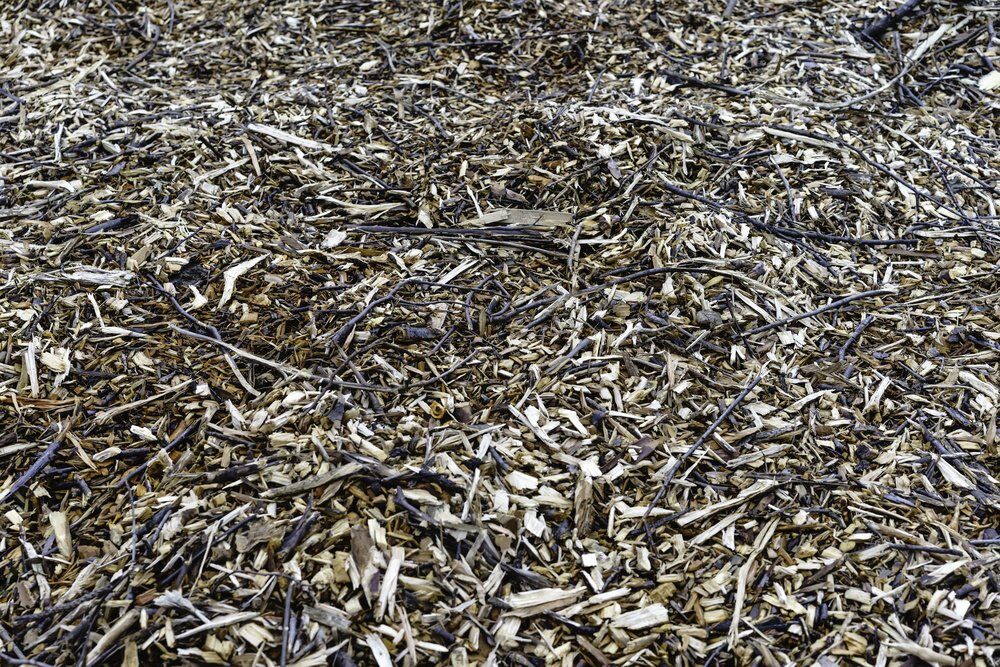The Green Claims Directive: Impact on companies and their marketing claims
The Green Claims Directive: Everything companies need to know about the impact on their marketing...
By: Johannes Fiegenbaum on 6/20/24 3:21 PM

Discover how the European Union Deforestation Regulation (EUDR) is reshaping the landscape for commodities and the compliance requirements that businesses need to navigate. This informative article breaks down the impact of EUDR on various commodities, addresses common questions, and provides valuable insights for business owners and stakeholders looking to understand and adapt to this new regulatory framework.
The European Union Deforestation Regulation (EUDR) is a significant legislative initiative aimed at addressing the impact of deforestation and forest degradation on global supply chains. Next to CSRD and CBAM it is one of the key initiatives coming out of the EU's Green Deal.
The Regulation on deforestation-free products, effective as of 29 June 2023, aims to address the expansion of agricultural land linked to the production of commodities such as:
Cattle, wood, cocoa, soy, palm oil, coffee, rubber, and their derived products like leather, chocolate, tires, and furniture.
Palm oil (34%) and soy (33%) are by far the most significant products according to the impact assessment by the European Commission. The EU, as a major economy and consumer of these commodities, acknowledges its partial responsibility for deforestation and forest degradation and seeks to take a leading role in addressing this issue.
Under this Regulation, any operator or trader placing these commodities on the EU market or exporting from it must demonstrate that the products do not originate from recently deforested land or have contributed to forest degradation.

Deforestation and forest degradation are rapidly worsening, contributing to climate change and the decline of biodiversity. The primary cause of these issues is the expansion of agricultural land for the production of commodities like cattle, wood, palm oil, soy, cocoa, and coffee.
As the global population continues to grow, the demand for agricultural land is expected to rise, further straining forests. Additionally, shifting climate patterns are projected to impact food production.
Biodiversity loss poses a significant threat to the sustainability of water cycles and food systems, which in turn jeopardizes food security and nutrition. Over 75% of global food crop varieties depend on animal pollination for reproduction. Additionally, genetic diversity and ecosystem services are vital inputs for various industrial sectors, especially for the production of medicines such as antimicrobials. This highlights the crucial role of biodiversity in supporting not only food production but also other essential aspects of human well-being and economic activities.
The EUDR aims to tackle the issue of deforestation and forest degradation by prohibiting the placing of products linked to deforestation on the EU market. It requires businesses to conduct due diligence to ensure that the products they place on the EU market are not associated with deforestation or forest degradation.
The primary objective of the EUDR is to contribute to the global fight against deforestation and promote sustainable development. By regulating the import of certain commodities linked to deforestation, the EU aims to encourage responsible sourcing practices and support sustainable land use.
The EUDR applies to the following products:
It covers not only the direct import of these products but also their inclusion in other goods, such as processed food, animal feed, and biofuels.
Deforestation-free means that products are made in a way that doesn't harm the forests. It also means that any wood used in the products comes from the forest in a way that doesn't hurt the trees or the land.
Businesses operating within the EU market must adhere to specific compliance requirements outlined in the EUDR to ensure responsible sourcing and trade practices. Relevant commodities and relevant products shall not be placed or made available on the market or exported unless all the following conditions are fulfilled:
Under the EUDR, businesses are required to exercise due diligence by implementing measures to identify, prevent, and mitigate the risks of placing products associated with deforestation on the EU market.

Compliance with the EUDR necessitates comprehensive documentation and traceability of supply chains to provide evidence of sustainable sourcing practices and the absence of deforestation.
Operators must gather information, documents, and data to prove that relevant products comply with Article 3. This information must be collected, organized, and kept for five years from the date the products are placed on the market or exported. The required information includes:

Based on the information and documents mentioned above, companies must assess whether there is any risk that the products they want to sell or export do not meet the regulations. Companies can only sell or export the products if their assessment shows there is no risk, or only a very small risk, of non-compliance.

1. Risk Assessment and Mitigation:
These measures can include:
Measures may also involve helping suppliers, especially smallholders, to comply through training and investment.
2. Risk Management Policies:
These should include:
3. Documentation and Review:
All these proccesses can also feed into establishing ESRS reporting practice, as outlined in this article.
Penalties for non-compliance will be effective, fair, and deterrent. They include fines based on the environmental damage and the value of the products, ensuring those responsible lose any economic benefits, with higher fines for repeat offenses.
Fines for companies can be up to 4% of their total annual turnover.
Penalties also include confiscating the non-compliant products and any related revenues, excluding offenders from public contracts and funding for up to 12 months, banning them from selling or exporting relevant products temporarily, and restricting the use of simplified due diligence for serious or repeated violations.

The Single Window will improve cooperation and coordination between different authorities and support automatic checks of non-customs formalities for goods entering or leaving the EU. This will be done through a digital solution that allows electronic data exchange between authorities, enabling businesses to complete border formalities in one place within a Member State, thus reducing duplication, time, and costs.
The European Commission proposal reveals that the Single Window concept encompasses multiple platforms operating at various levels. So it is, in fact, not single. The single customs window aims to make information exchange between customs and partner authorities simpler, resulting in significant efficiency gains and time savings for clearing goods. Economic operators will benefit from automated exchanges between authorities and won't need to present physical documents for customs clearance. Customs authorities will be able to verify documents automatically, reducing the time and effort required for document checks. With the automated system available 24/7, standard cases can be cleared even outside of working hours. This single portal will also simplify regulatory requirements and eliminate the need to submit the same information to multiple authorities for the same shipments.
The Deforestation Due Diligence Statement Registry is a website that helps companies to make sure they are not contributing to the cutting down of trees. It will start in November 2024 and everyone can use it in December 2024.
Using the Registry, companies can precisely identify the origins of products and materials by mapping specific areas or providing individual or bulk coordinates. To simplify the process for companies dealing with products from multiple locations, the system offers options for uploading, copying, or reusing location information. Bulk coordinates can be entered in a file using the GeoJSON standard format.
When creating a Due Diligence Statement, the operator selects the product type and specifies characteristics such as quantity and volume. Furthermore, downstream supply chain operators (such as EU traders) can reference previously created Statements, streamlining the due diligence process.
Navigating the EUDR requires proactive measures and strategic approaches to ensure compliance and uphold sustainable trade practices.
Alternatively, you can strategically move away from EUDR by discontinuing the use of those high-risk commodities, following the footsteps of Rügenwalder Mühle's proactive approach.
The European Union Deforestation Regulation (EUDR) aims to prevent deforestation by requiring companies to prove that products sold in the EU are deforestation-free and legally produced.
Large companies and non-SME traders must comply by 30 December 2024. SMEs have until 30 June 2025 to meet the same due diligence requirements.
The regulation currently applies to cattle, cocoa, coffee, palm oil, soy, rubber, and wood – and also to derived products like chocolate, leather, tyres, and furniture.
Deforestation means converting forest into non-forest land, typically due to agriculture, mining, or infrastructure development – regardless of legality in the producing country.
No. SMEs must also comply – they just have a later deadline (30 June 2025). Proportional enforcement may apply, but the obligations remain the same.
No. Certifications like FSC help, but they don’t replace the company’s legal responsibility to conduct full due diligence – including traceability and risk mitigation.
Authorities will check declarations and supporting evidence, such as geolocation data, risk assessments, and supplier documentation. Enforcement includes audits and inspections.
By mapping supply chains, conducting risk assessments, gathering geo-data, and setting up traceability systems. Collaboration with suppliers and tech tools also help.
Fines up to 4% of annual turnover, product confiscation, exclusion from public contracts or funding, and restrictions on selling affected goods in the EU.
Yes, the EU is expected to add more commodities and tighten requirements over time, based on reviews and data collected after implementation.
Embracing sustainability as a competitive advantage can position businesses as leaders in responsible sourcing and trade practices, appealing to conscientious consumers and investors.
In conclusion, the EUDR represents a pivotal development in the global effort to combat deforestation and achieve sustainable development goals. Business owners and stakeholders must proactively engage with the regulation, understand its implications, and adapt their practices to ensure compliance and contribute to sustainable and ethical trade practices. By embracing the principles of the EUDR, businesses can not only meet regulatory requirements but also demonstrate their commitment to environmental stewardship and responsible global trade.
In a survey carried out among timber and forest risk commodity operators across Europe, the following picture emerged:
.png?width=940&height=624&name=output%20(11).png) This is due to the fact that traceability systems can greatly enhance the efficiency of timber sourcing. Interestingly, a significantly higher number of larger enterprises believe that regulations will not only positively impact customer growth, profitability, and market share but also compared to smaller companies with fewer than 50 employees.
This is due to the fact that traceability systems can greatly enhance the efficiency of timber sourcing. Interestingly, a significantly higher number of larger enterprises believe that regulations will not only positively impact customer growth, profitability, and market share but also compared to smaller companies with fewer than 50 employees.
This variation could indicate the differing resources at the disposal of enterprises or their familiarity with the implementation of other impactful regulations.
As companies look to navigate these complex regulations, it's also essential to consider how greenwashing can be avoided in their marketing strategies. Understanding the impact of regulations like the Green Claims Directive can further help companies align their communication with sustainable practices.
Additionally, companies interested in enhancing their sustainability strategies might benefit from exploring Life Cycle Assessment (LCA) as a tool for evaluating their environmental impact.
If there are any open questions, please do not hesitate to reach out. As an experienced sustainability consultant, I am available to assist you in navigating the complexities of these regulations and to help your company strengthen its sustainable practices and market position.

A solo consultant supporting companies to shape the future and achieve long-term growth.
More about meThe Green Claims Directive: Everything companies need to know about the impact on their marketing...
Explore the opportunities of EUDR for businesses and farmers, driving innovation, collaboration,...
In an era where sustainability is paramount, understanding and complying with the EU Sustainability...